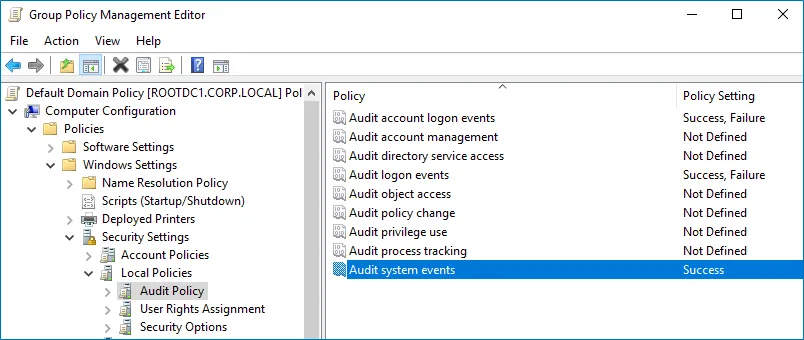Configure Basic Domain Audit Policies
Basic local audit policies allow tracking changes to user accounts and groups and identifying originating workstations. You can configure advanced audit policies for the same purpose too. See Configure Advanced Audit Policies
Step 1 – Open the Group Policy Management console on any domain controller in the target domain: navigate to Start > Windows Administrative Tools (Windows Server 2016 and higher) or Administrative Tools (Windows 2012) > Group Policy Management.
Step 2 – In the left pane, navigate to Forest: <forest_name> > Domains >
<domain_name> > Domain Controllers. Right-click the effective domain controllers policy (by
default, it is the Default Domain Controllers Policy), and select Edit from the pop-up menu.
Step 3 – In the Group Policy Management Editor dialog, expand the Computer Configuration node on the left and navigate to Policies > Windows Settings > Security Settings > Local Policies > Audit Policy.
Step 4 – Configure the following audit policies.
| Policy | Audit Events |
|---|---|
| Audit logon events | "Success" and "Failure" |
| Audit account logon events | "Success" and "Failure" |
| Audit system events | "Success" |

Step 5 – Set the Audit system events policy to Success.
Step 6 – Navigate to Start > Run and type "cmd". Input the gpupdate /force command
and press Enter. The group policy will be updated.